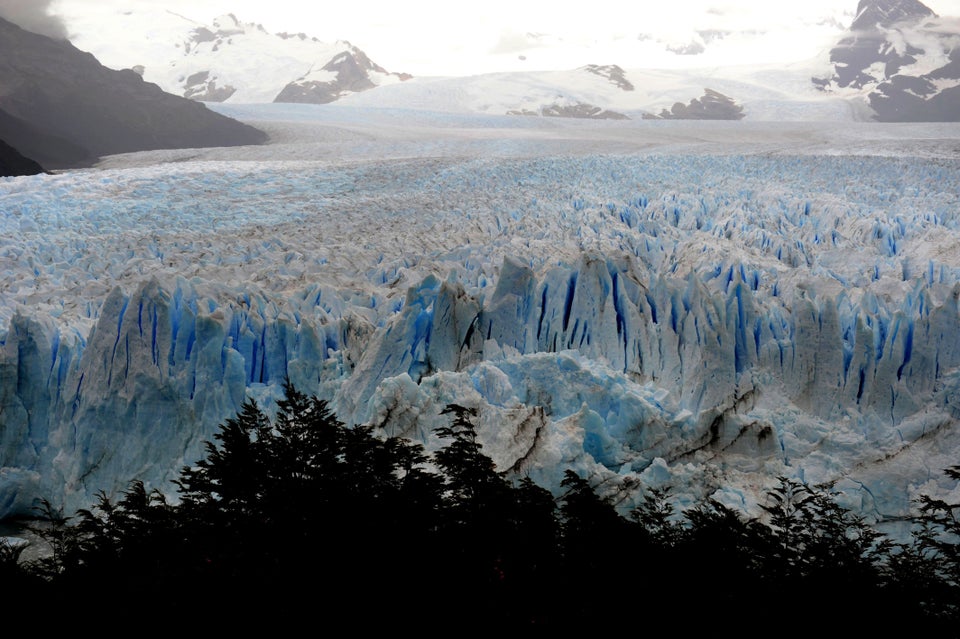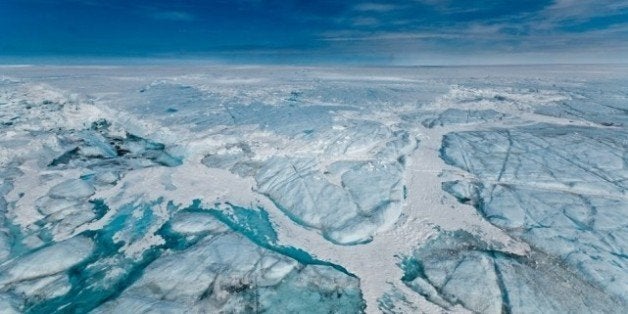
One of nature's greatest vanishing acts has finally been explained, as scientists have figured out what causes the sudden drainage of some big lakes atop Greenland's ice sheet.
In 2006, researchers from the Woods Hole Oceanographic Institution and the University of Washington noticed that some of the glacial lakes drained away completely -- sometimes in a matter of hours. Two years later, the same researchers discovered how the icy bottoms of the lakes could crack open, triggering the drainage.
But no one knew where the cracks come from -- until now.
(Story continues below.)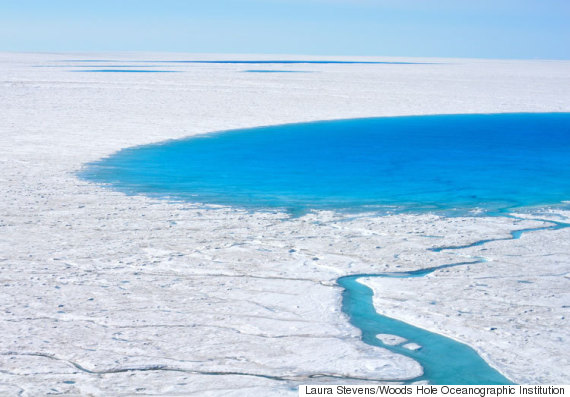
Each spring and summer, thousands of lakes form on top of the Greenland Ice Sheet.
To pinpoint the cause of the cracks, the researchers -- along with colleagues from MIT and the University of Tasmania -- deployed a network of 16 GPS units around North Lake, a 1.5-mile-long lake in southwest Greenland where the drainages were first documented.
The researchers used the units to record movements of the ice before, during, and after three instances of draining that occurred in the summers of 2011, 2012, and 2013.
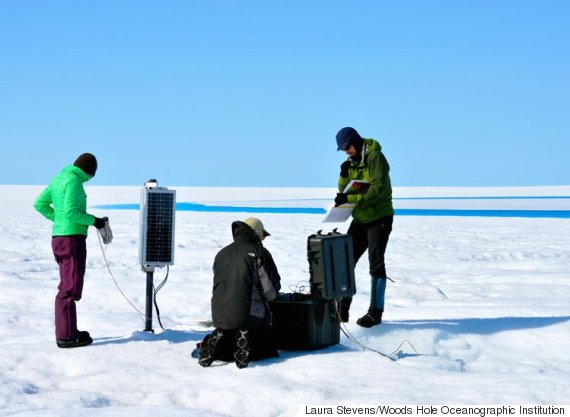
Scientists deploying GPS units around a lake to record movements of the ice.
Analysis of the GPS data showed that roughly six to 12 hours before each draining, some water from the lake had trickled to the bottom of the ice sheet through narrow conduits in the ice known as moulins. As the water accumulated, it pushed up on the ice sheet, building tension until -- crack! -- it broke through the ice, allowing all the lake water to drain away.
"In some ways, ice behaves like Silly Putty--if you push up on it slowly, it will stretch; if you do it with enough force, it will crack," Laura Stevens, a graduate student in the MIT-Woods Hole Oceanographic Institution Joint Program in Oceanography, said in a written statement. “Ordinarily, pressure at the ice sheet surface is directed into the lake basin, compressing the ice together. But, essentially, if you push up on the ice sheet and create a dome instead of a bowl, you get tension that stretches the ice surface apart. You change the stress state of the surface ice from compressional to tensional, which promotes crack formation.”
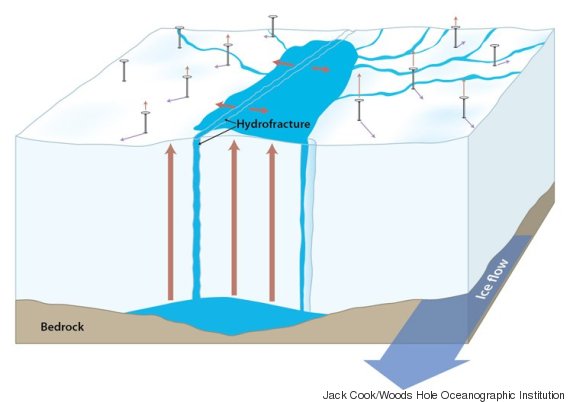
Many glacial lakes disappear within hours when large cracks form below them, draining the lakes and sending torrents of water to the base of the ice sheet.
According to the researchers, the finding could help scientists better predict how much meltwater from the ice sheet is contributing to rising sea levels, especially as the climate in the region becomes warmer.
"It's half of the equation of how the Greenland ice sheet contributes to sea level rise, with the other half being the years when the ice sheet melts quicker than the snow is deposited," Stevens told Live Science.
The research was published in the journal Nature on June 4, 2015.

